
We took a 54km hike through the saint hubert forest
2 days hiking/1 bivouac
For the very first bivouac of our life, we will be hiking along a section of the loop trail known as “entre Lesse et Lomme” (between Lesse and Lomme, two of the area’s emblematic rivers). The entire trail is 78km long and winds its way through the lush Saint-Huber forest, which is quite a distance for beginners such as us, but definitely not an impossible feat. Although, to be totally honest, the experience did leave us with burning feet and our fair share of muscle cramps. But the most important thing about our experience was this: we discovered one of the largest forests in Belgium.
An experience you should not underestimate
Setting off an a hiking trip that involves walking a minimum of 24km per day is not an experience you should undertake lightly, We are aware of this when we leave for our trek from the village of Anloy, one of the trail’s villages-relais (this designates a village that provides core amenities for travellers). Moreover, the route we are taking follows about half of the Lesse and Lhomme trail, then branches off towards the woods, The track is not signposted and we can only find our bearings by following the GPX tracks we have downloaded on our watch, courtesy of Julien from the Blog Sentiers du Phoenix, who had taken the hike a few months before. Off we go for our adventure, under a threatening sky and in the opposite direction of the original trail. Today, we need to reach the nearest bivouac area, the Bois du Bané, which is located 23km from here.
First the trail follows the road, but pretty soon we are walking on scenic woodland paths through the Saint-Hubert forest. To make sure we don’t get lost we check the arrow on our watch…all is well, we seem to be heading in the right direction. It’s slightly less adventurous than hitting the road armed with a map, but also lot more reassuring for novices like us, especially as there is not a single watering hole on the trail. We are totally self-reliant. I made sure to bring my filtered water bottle along for the ride. Thanks to this nifty invention, you can drink from almost any creek or brook when you’re out in the sticks. The filtration bottle kills 99,9% of the bacteria and protozoans as well as any unwelcome micro-organisms and is definitely a must-have piece of equipment when you’re hiking in the wild. We refill our bottles many times in brooks as we get closer to the bivouac.
In can feel exhaustion creeping up on me and my legs are sore from walking such a distance. Tim’s back is aching because of his heavy backpack. We take a short break to adjust the backpack and distribute the weight optimally, to relieve shoulder pressure. Tim is not used to carrying heavy weights when hiking, and didn’t realise the importance of distributing the weight on your hips and not just the shoulders. Once we’ve sorted it out, he feels a lot better and soon gets back on track. The sun has climbed to the top of the sky but the same can’t be said of the kilometres we have covered. I have the unpleasant feeling that we are travelling so slowly that time almost seems to stand still! After a 6 hour hike we finally arrive on the bivouac site. About time too, are feet are overheated.
Tired, but with a wonderful feeling of freedom
The Bois Banè bivouac site is pretty basic, there is an area where we can make a camp fire, a wooden bench and nothing else, not even a water tap…Two hikers have already pitched their tent when we arrive. We set up camp,
our feet are burning, our muscles are sore, but we have the satisfaction of knowing that we have accomplished quite a feat! Despite my state of near-exhaustion, I am overwhelmed by a rare feeling of total freedom. Walking, drinking, eating and sleeping in the middle of nature takes us back to ancient times when man spent most of his time foraging or hunting for food and in search of shelter for the night. This wonderful feeling of freedom is something we rarely experience in our modern day lives, lives that are more often than not disconnected from nature and our primal instincts.
The second day of our hike turns out to be even more challenging than the first, which was already quite punishing; we are to tackle 29 km! Which, by the way, turns out to be closer to 30…Our pace is a lot faster despite our crazy aches and pains. When we are about 4km from our destination, I am this close to start putting my thumbs out and hitch a hike. I finish the walk like an automaton, using my mental strength to guide me through the last stretch of road taking us back to our departure point. This time, the sun is shining as if it wants to reward us for completing the experience to the very end. I am aching so badly I can barely walk, but I also feel delighted that I managed to finish the whole loop walk. Tim, on the other hand, is as fit as a fiddle, which probably has something to do with the fact that he has the physical condition of a seasoned marathon runner…
Stunning landscapes and scenic forests
Despite the effort and our aches and pains, we feast our eyes on stunning landscapes each step of the way. The area known as La Grande Forêt de Saint-Hubert Forest stretches out of 100,000 hectares, half of which is covered by trees; the other half consists of a wide variety of landscapes.
At times we walk through a densely wooded forest; the forest is so thick that from time to time darkness falls in broad daylight. Mere moments later, we find ourselves hiking through peat bogs, one of them is the nature reserve “de la Vieille Rochette”. It is home to many protected species such as the violet copper, a small butterfly that is threatened with extinction. A few cows are grazing peacefully nearby, placidly eyeing up the two weary hikers walking along their square meadow.
And sometimes history suddenly appears before our very eyes. On the Stations of the Cross dating back to 22 August 1914, French and German flags combine and decorate the crosses planted along the path. They have been put there to remind us of the thousands of soldiers that died on this very spot during the First World War.
No sign of the king of the forest
The area is known as a hunting ground, and we make quite a few expected encounters. As we near a clearing, we see a fox surreptitiously slinking away. A huge hare scarpers as soon as he catches sight of us leaving us with an entertaining view of his hindquarters bobbing up and down as he disappears into the forest. More surprisingly, we come across a couple of grass snakes slithering along the path. Honestly, I really did not expect to see grass snakes in the middle of the Belgian forest. Unfortunately, although we are in the middle of deer mating season, we see neither hide nor hair of the king of the forest...not once do we catch even the tiniest glimpse of a stag.
Prepare properly before setting off
The hike is not really difficult; the ground is relatively even all along the trail. But the distances travelled are not to be underestimated especially with a backpack. The hike entails walking 23 to 24 km on day one to get to the bivouac site, and 27km on day two. We manage to add another 3 km on the second day because we got lost a couple of times…Or maybe it was because we took a shortcut, which everyone knows is the longest distance between two points! It needs to be noted that
in Belgium wild camping is forbidden, you can only set up camp on designated bivouac areas.
At times, there is no signposting
Bring comfortable shoes you are comfortable travelling long distances with. You do not necessarily need to wear hiking shoes, especially if you’re not used to wearing them for hours on end. Mine cost me quite a few bruises on my ankles, I even tripped and fell twice because my shoelaces kept getting tangled up!
It’s a good idea to bring a filtering water bottle so you can fill up along the way. Make sure you keep some water for cooking, especially if you’re planning to boil food. On Julien’s route, make sure you don’t get lost, as you are travelling in the opposite direction of the original trail and the signposting is not quite as visible as in the direction of travel of the 78km trail. And if the sky looks threatening, don’t forget to bring along an oilskin that covers you from head to toe, nothing can be more unpleasant than travelling in wet clothes.
Obviously, these guidelines will seem pretty self evident if you are an seasoned hiker, but they might well prove useful to others. Better to be safe than sorry!
Enjoy this experience
2/3 of the Lesse and Lhomme loop trail :
Please contact Julien from the blog Sentiers du Phoenix to get the trail details
www.sentiersduphoenix.be
Information about the 78km loop:
www.lagrandeforetdesainthubert.be
(click on "à la carte trails" on the lower left corner to access all of their trails)



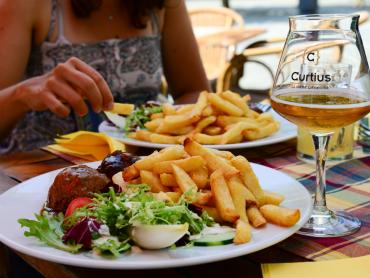


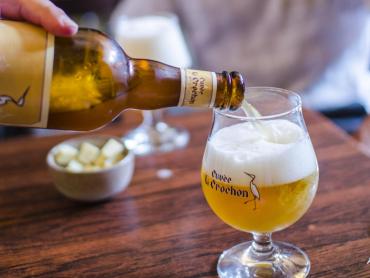
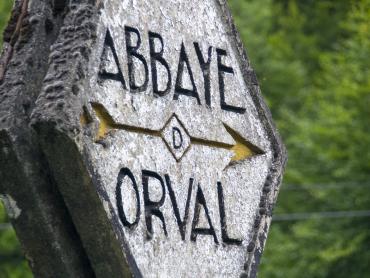
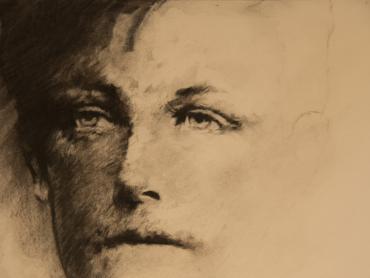
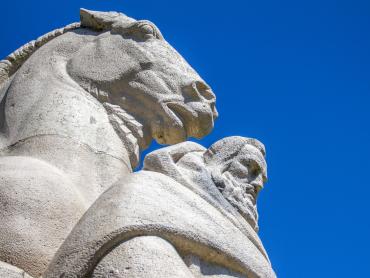

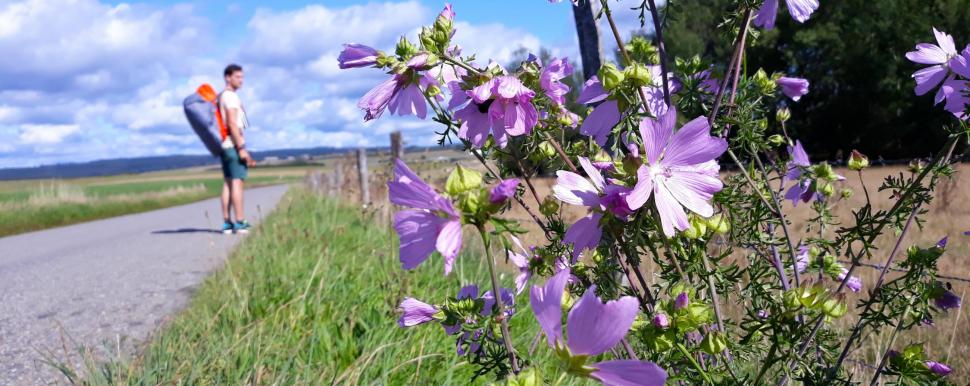

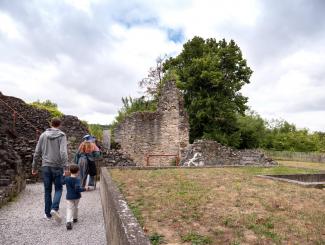


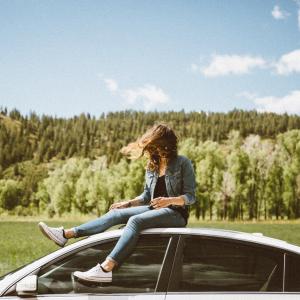



Not along a single watering hole along the trail